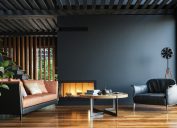"Farmhouse" Design Is In, New Data Shows: 6 Ways to Get the Look
Here's how to keep the popular style looking fresh, experts say.
Ever since Chip and Joanna Gaines first popularized the look on HGTV's Fixer Upper in 2013, modern farmhouse homes have become a ubiquitous fixture on suburban streets. Recognized for their shiplap walls, neutral color schemes, gabled ceilings, and down-home decor, these homes are widely beloved for their unique blend of warm livability and streamlined style. In fact, The New York Times recently declared it "the defining style of the current era."
To this point, new research from real estate company RubyHome Luxury Real Estate shows that the number one most Instagrammable interior trend is "farmhouse." After analyzing variations on this hashtag, they found the trend had 4.8 million posts, beating out the similar-in-style number-two trend "rustic," which had 4.7 million posts.
However, any time something becomes so widely popular, it runs the risk of falling flat. Luckily, interior design experts say there are ways to embrace the trend while keeping the style fresh for the modern eye. Read on to learn their top six tips for integrating the farmhouse style into your home without rendering it the same as your neighbor's.
RELATED: "Moody" Paint Colors Can Increase Your Home's Value, New Study Says.
1
Don't be scared of color.
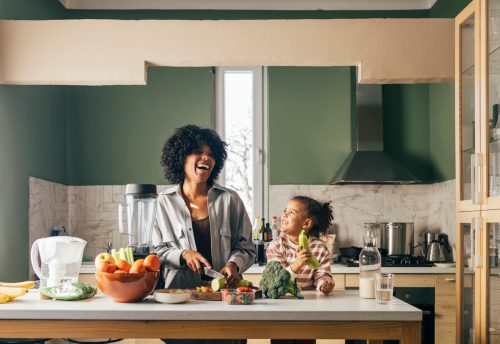
Farmhouse-style homes are notoriously devoid of bold color schemes, preferring whites, creams, and earthy tones. Yet experts say that doesn't mean you should confine yourself to a neutral palette while shunning color altogether.
"To keep the look fresh, introduce pops of color that reflect your personal style. Use bold, vibrant hues in your artwork, cushions, or even a feature wall. This allows for a balance between the traditional and modern, thus avoiding a dated appearance," suggests Artem Kropovinsky, an interior design expert and the founder of Arsight.
Using open shelving to display your favorite kitchenware, books, or decor pieces is one simple way to add color to the space without interrupting the broader color scheme. "Not only does it create visual interest, but it also lends a sense of openness and casual ease to the space," says Kropovinsky.
2
Balance old and new.
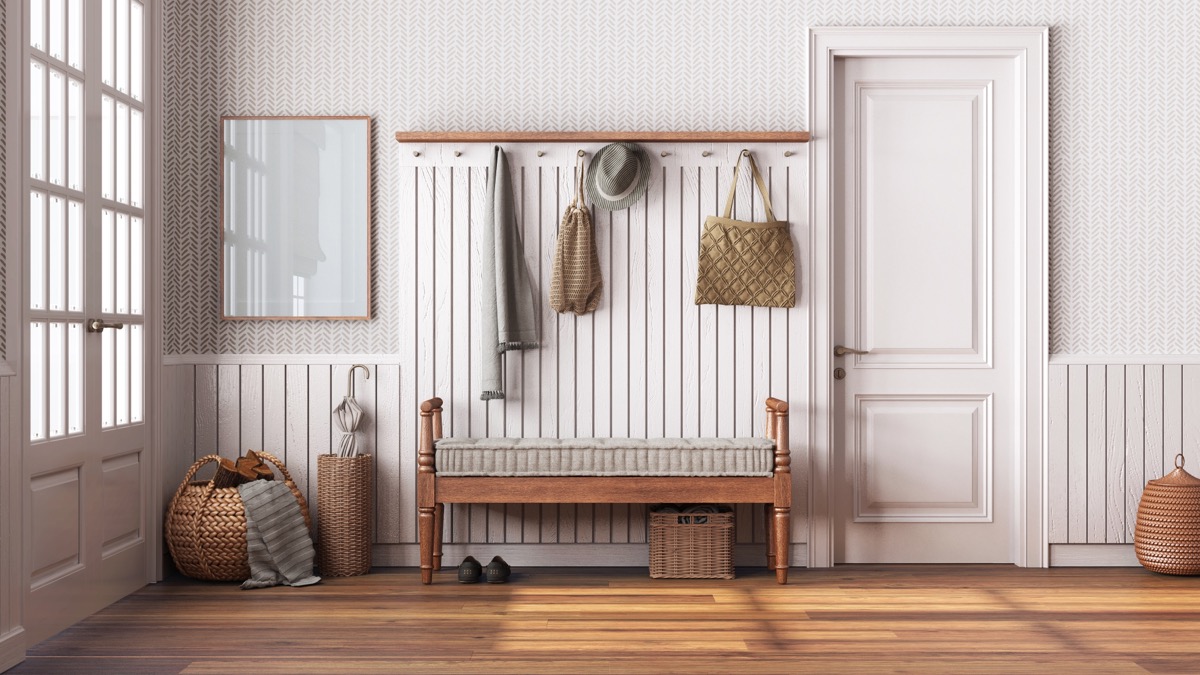
The key to keeping the farmhouse look fresh is blending old and new. For instance, while you may invest in sleek new couches to optimize comfort, you can balance the look by hitting the antique store for an old armoire, vintage coffee table, or pair of period lamps.
"To maintain this balance, mix antique pieces, reclaimed wood furniture, or vintage-style lighting fixtures with sleek, contemporary pieces," says Kropovinsky. "The key is to create a sense of lived-in comfort without compromising on style or functionality."
RELATED: 7 Tips to Make Your Living Room Look Expensive Without Breaking the Bank.
3
Use furnishings that reflect the home's history.
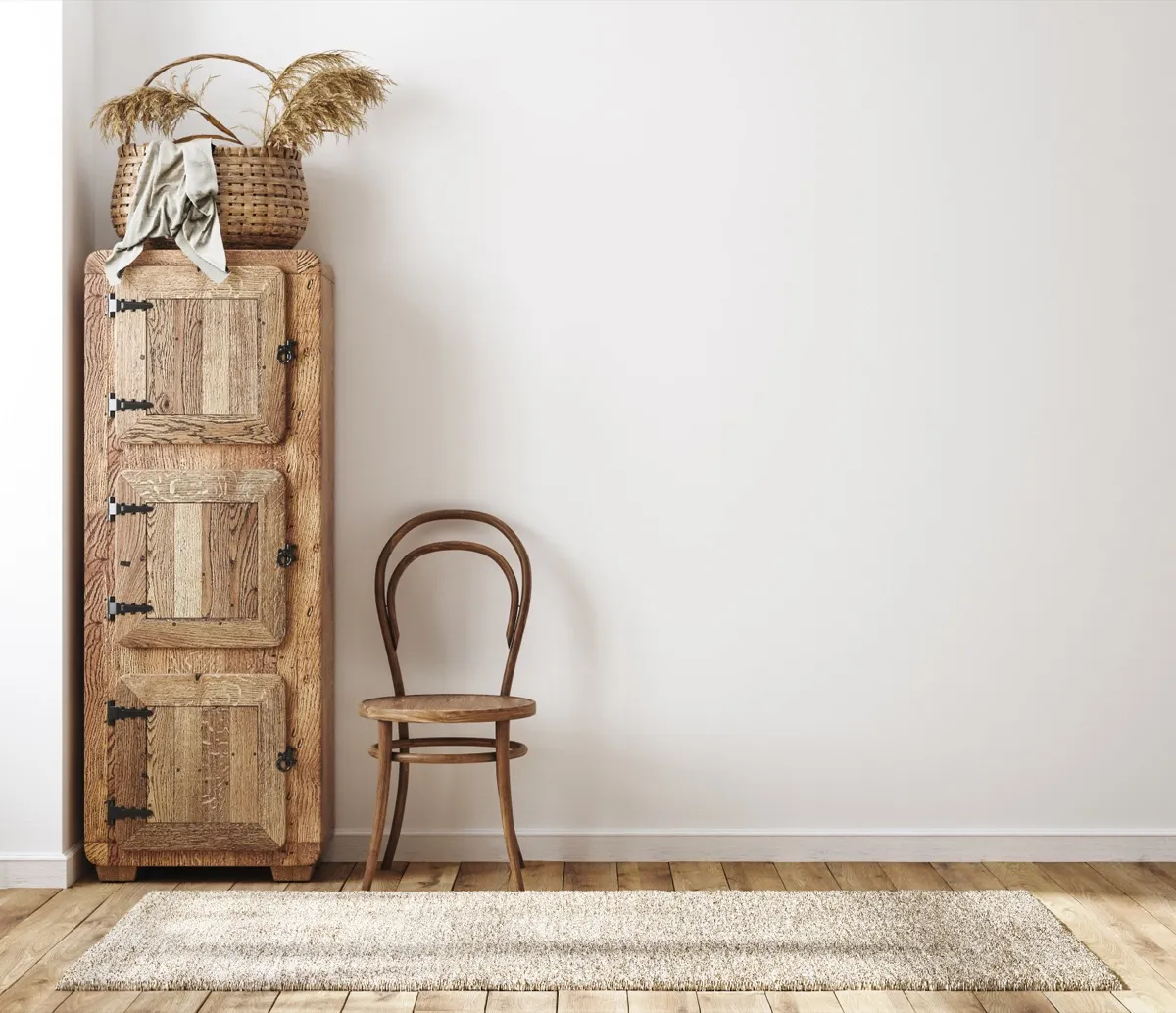
Home design expert Stefana Silber feels strongly that farmhouse decor belongs exclusively in homes with that architectural style and history. However, if you happen to live in a true farmhouse, she has some tips for furnishing your space.
Silber says that farmhouse furnishings should reflect the lifestyle of the occupants and are most often "simple, streamlined, and squared off." She adds that the materials used should be natural and hard-wearing to enhance the rustic look of the space.
In particular, she recommends "metal that shows patina and wood that is weathered from time and use, painted wood furniture with chips and distressing, and wrought iron light fixtures without any decorative elements." She also suggests avoiding shiny or polished materials, "as they are more appropriate for formal styles."
4
Play with texture.

Though farmhouse design favors white walls and natural accents, you'll still need a way to make your personal style shine through. Kropovinsky says one of the best ways to do this is to play with texture in your surfaces, furnishings, and home accessories.
"Farmhouse style is tactile, relying heavily on the layering of different textures," says the designer. "Combine smooth and rough surfaces, like a rustic wooden dining table with velvet upholstered chairs. Use materials such as cotton, burlap, and linen in your decor for a more authentic farmhouse feel. This fusion of textures brings warmth and depth to the space, lifting it beyond the stereotypical 'rustic' decor."
For more home decor tips sent directly to your inbox, sign up for our daily newsletter.
5
Make it personal.
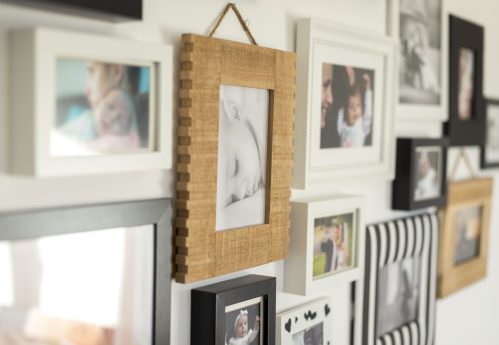
Generic wall signs are an already-dated feature in many modern farmhouse-style homes. You'll recognize these by their common, feel-good messages—most often in that swirly, signature farmhouse font. However, Kropovisnky says it's best to skip the framed platitudes in favor of decor items that actually hold meaning in your family or reflect its history.
"This could include family heirlooms, handmade pottery, or bespoke artwork," he suggests. "These personal touches will make your home feel lived-in and loved, as well as providing conversation starters for guests."
6
Go green.
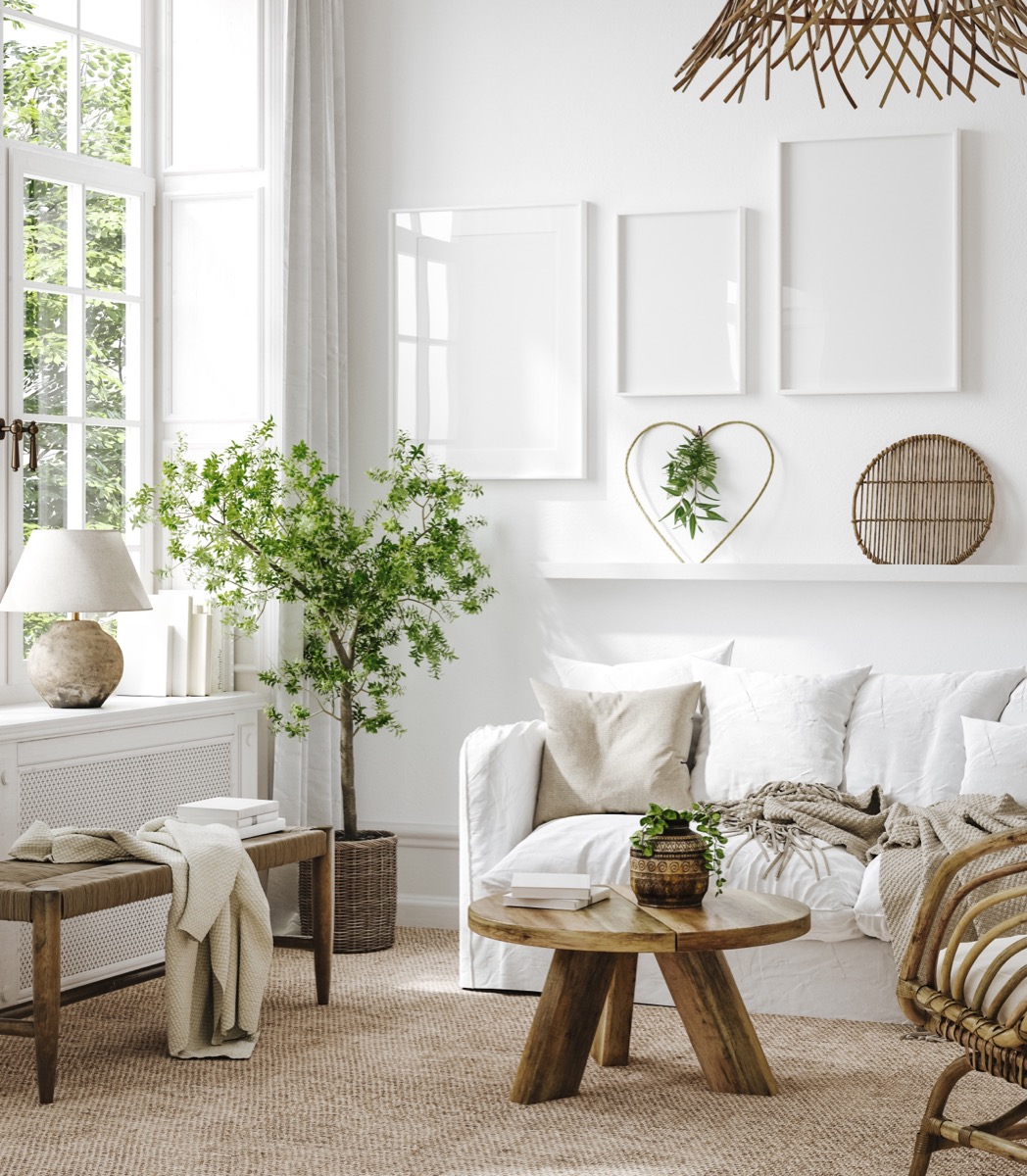
Modern farmhouse-style homes employ a streamlined, minimalist take on the country look. This often translates into neutral color schemes and clean lines. However, adding some greenery can help prevent your house from feeling too stuffy or sterile by providing organic shapes and vibrant hues.
"Introducing indoor plants can add a fresh, lively touch," says Kropovinsky. "Greenery brings in an element of the outdoors, adds color, and purifies the air, all contributing to a welcoming and refreshing ambiance."

